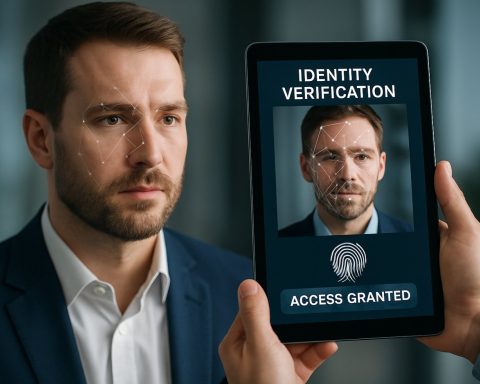- EV charging networks are expanding rapidly, but technical glitches—including massive billing errors—highlight weaknesses in support and payment systems.
- Consumer demand for electric vehicles is soaring, yet the digital infrastructure supporting EV charging often lacks robust safeguards and reliable customer service.
- Blink Charging, a major EV charger provider, faces financial instability despite fast growth, with a high bankruptcy risk and workforce cuts amid intensifying competition.
- Competitors like Tesla and ChargePoint continue innovating, but industry-wide software issues and occasional operational failures threaten consumer trust.
- The success of the electric vehicle transition now depends on dependable payment systems, strong human support, and the ability of companies to quickly address errors and maintain reliability.
A crisp tap of a credit card at a public EV charger should have signaled the start of another uneventful refueling for one electric vehicle owner. Instead, the digital display flashed an amount usually reserved for Wall Street mergers: $515 million. That’s not a typo, nor a punchline—just a jaw-dropping error that exposes glaring technological cracks behind the sheen of America’s cleanest highways.
Behind the Promise: Growing Pains at the Speed of Electrons
Riding a wave of green energy optimism, electric vehicle charging networks have multiplied at breakneck speed. Blink Charging, now boasting over 100,000 public chargers worldwide, embodies the ambition driving the industry. Through aggressive expansion, new Maryland-based manufacturing plants, and strategic tie-ins with EV platforms, the company has positioned itself as a must-have amenity for urban dwellers and eco-conscious corporations.
But when a user received a bill north of half a billion dollars for a six-kilowatt-hour top-up—enough energy to power a home for about five hours—every glossy press release faded into irrelevance. The anomaly snowballed into absurdity when automated support bots rerouted the complaint to the sales department, and human help became as elusive as a charging spot downtown on a Saturday night.
Insatiable Demand, Unfinished Systems
Electric vehicles have entered mainstream consciousness. U.S. sales doubled in the last three years, with projections pointing ever higher as more automakers pivot toward battery-powered fleets. Yet the digital backbone supporting this transition lags behind. The recent charging fiasco crystallizes what many early adopters quietly fear: the conveniences of the future still hinge on the reliability of the present.
As EV infrastructure balloons—powered by billions in investments and new government incentives—the challenge shifts. Hardware is just the starting line; it’s the invisible network of payment processors, customer support, and software safeguards that must catch up. Without robust error checks and a safety net of real human accountability, one erroneous keystroke can turn an eco-friendly commute into a Kafkaesque ordeal.
Growing Fast, Running Hot
Blink’s balance sheet presents its own cautionary tale. Despite surging usage and triple-digit station growth, the company faces headwinds: a 70% bankruptcy probability estimate from independent analysts, a 20% workforce reduction announced for fiscal survival, and a sudden swap of chief financial officers as 2025 approaches. Even as revenues rise—$34.8 million in recurring service income last year, up handsomely from prior cycles—the specter of operational instability looms.
Competitors like Tesla, ChargePoint, and EVgo roll out new software and hardware at a relentless pace, crowding a landscape where mistakes are measured in millions and trust is the most volatile currency. Tesla owners may gripe about software glitches and growing lines, but stories of deca-million-dollar bills are, mercifully, still rare.
No Room for Error
The electric dream hinges on the small stuff: a friendly voice on the hotline, a chatbot with common sense, a billing system that knows a decimal point from a disaster. Fail at these, and all the good intentions in the world go up in digital smoke.
For now, the saga ends in limbo. The unlucky owner still waits for resolution, their account locked and their trust on ice—a sharp reminder that technology, no matter how advanced, is only as resilient as the humans who design, monitor, and fix it.
The Bottom Line: As communities and corporations race toward an electrified tomorrow, the stakes escalate beyond climate goals and quarterly returns. The real test is whether these networks can earn—and keep—our trust when the power surges and the software stutters. Until then, every beep and blink at the charger is a roll of the dice.
Curious how the electric revolution keeps sparking headlines? Explore the latest on Blink Charging and the fast-evolving world of EVs.
EV Charging Catastrophe: How a $515 Million Glitch Exposed the Hidden Risks in America’s Electric Future
Overview: EV Charging Networks Are Powering Up, But Are They Ready?
The recent misbilling incident, where an EV owner was charged $515 million for a routine charge, wasn’t just a shocking error—it underscored deep-rooted challenges as America’s electric vehicle (EV) infrastructure accelerates. While companies like Blink Charging rush to meet soaring demand, this high-profile glitch is only the tip of the iceberg. Here’s what you should know about the world behind the chargers—and what you can do to avoid costly pitfalls.
More Facts & Insights Not Covered in the Source
Global Market Forecasts and Industry Trends
– Explosive Growth: The U.S. has over 150,000 public EV charging outlets as of 2024, with the Department of Energy aiming to hit 500,000 by 2030 (source: U.S. DOE).
– Dominant Players: Besides Blink, key competitors include Tesla (with Supercharger and Destination networks), ChargePoint, and EVgo.
– Investment Surge: The 2021 Bipartisan Infrastructure Law allocated $7.5 billion to expand nationwide charging corridors—a key driver for rapid deployment.
– Interoperability Push: ‘Plug & charge’ standards (ISO 15118) are emerging, promising seamless authentication and payment across brands.
– Reliability Scrutiny: J.D. Power’s 2023 EV Public Charging Study found that 1 in 5 charging attempts fail, mainly due to payment authorization errors or malfunctioning hardware.
Payment Systems & Security: What Can Go Wrong?
– Outdated Tech: Many public chargers still use legacy credit card processors vulnerable to both accidental and malicious billing faults.
– Lack of Safety Nets: Unlike major retail POS systems, some EV stations lack hard-coded transaction caps—meaning anomalous charges may slip through.
– Data Breaches: EV networks collect sensitive data (credit card numbers, vehicle IDs, location). In 2022, ChargePoint reported a security incident potentially affecting user data (source: TechCrunch).
– Crypto Payments: Some networks test blockchain-based payment for added traceability, but adoption remains niche.
Real-World Use Cases & Life Hacks: How to Avoid EV Charging Nightmares
– Always check the display for transaction details before and after charging.
– Use mobile apps to monitor charges in real time—most networks offer instant notifications for completed sessions or anomalies.
– When in doubt, favor chargers in well-trafficked, monitored areas—service is often quicker and issues are resolved faster.
– If overcharged, immediately contact your payment provider and file a chargeback. Document all correspondence and screenshots.
– Opt in to network alerts where available—some apps let you set spending limits or real-time fraud notifications.
Tutorial: What To Do If You’re Overcharged
1. Take clear photographs of the charger’s display and your EV app showing the erroneous charge.
2. Immediately contact the charging network’s customer support (phone, email, or app chat).
3. File a dispute with your credit card provider or bank for added protection.
4. Publicize your case on social media if support is unresponsive—networks often escalate high-visibility complaints.
5. Report persistent issues to local consumer protection agencies or the Better Business Bureau.
EV Charging Features, Specs & Pricing Comparison
| Network | DC Fast Charge? | Price (avg) | Membership Perks | App Reliability | Support | Unique Tech |
|—————–|—————-|——————|————————–|—————–|—————|——————–|
| Blink | Yes | $0.39-0.69/kWh | Discounts via subscriptions| Moderate | Mixed | 4G LTE, OCPP |
| Tesla | Yes (Supercharger) | $0.25–0.59/kWh| Auto-auth, route planner | High | Good | Plug & Charge |
| ChargePoint | Yes | Varied/free | RFID, home + public apps | High | Good | Vendor-agnostic |
| EVgo | Yes | $0.39–0.79/kWh | Loyalty points | Moderate | Moderate | App-remote start |
Controversies & Limitations
– Varying Fees: Some networks impose idle fees, peak pricing, or high minimum bills.
– Service Gaps: Rural and underserved communities remain at a disadvantage—‘charging deserts’ persist despite federal plans.
– Reliability Concerns: A 2023 MIT study found the average uptime for U.S. public chargers is only ~80%.
– Corporate Turbulence: Blink’s 70% bankruptcy risk (as noted by Independent Equity Research) has customers concerned about long-term network continuity.
– Accessibility: Not all chargers support tap-to-pay; some require RFID cards or proprietary apps.
Security, Compatibility, and Sustainability
– Security: Always ensure the URL is secure (https://) when paying via browser or app. Use strong passwords and enable MFA where possible.
– Compatibility: Most new U.S. EVs use CCS Combo or Tesla NACS standards, but always check your vehicle’s port type before heading to a charger.
– Sustainability: Many networks, including Blink and ChargePoint, power stations with renewables. Still, the majority of the U.S. grid is not carbon-neutral (source: EPA.gov).
– Regulatory Outlook: New guidelines from the National Electric Vehicle Infrastructure (NEVI) program require public chargers to meet 97% uptime targets.
Pros & Cons
Pros:
– Rapid nationwide network expansion
– Increasing government backing and incentives
– Advanced apps and real-time status updates
– Eco-friendly, lower long-term fueling costs
Cons:
– Susceptible to billing and software glitches
– Inconsistent customer support
– Varying hardware and payment compatibility
– Risk of outages or lack of coverage in some regions
Expert Predictions
– By 2027, ultra-fast charging stations (150kW+) will outnumber legacy Level 2 sites in urban U.S. markets (source: BloombergNEF).
– Cross-network payment integration—using any app at any station—will be the new normal by 2026.
– Robust user verification and payment security tools will be industry-standard, minimizing risks like million-dollar overcharges.
Top Reader Questions Answered
1. What should I do if I see a suspicious charge at an EV charging station?
File a dispute with the network and your credit card company immediately—never agree to pay erroneous fees on the spot.
2. Are all charging network apps equally secure?
No—always use official apps from the network or your carmaker, and keep software updated for the latest security patches.
3. Is one network ‘safer’ than another for billing reliability?
Tesla’s vertically integrated model reduces payment processing errors, but even they’re not immune. Choose networks with solid customer reviews and proven uptime.
Actionable Tips to Protect Yourself
– Register your EV with at least two major charging networks for backup access.
– Set up real-time transaction alerts with your bank or credit card provider.
– Keep all app and network software updated; check for recall or bug fix notices.
– Before long trips, map out charging stops with highly-rated stations and have a backup plan.
– If you encounter a major issue, share it on reputable EV forums or social platforms to help other users and pressure networks to improve.
For the latest developments on public charging infrastructure, industry trends, or network expansions, check trusted official sites like Blink Charging and Tesla.
The Bottom Line:
America’s electric future is bright, but only as reliable as its digital foundation. Stay informed, proactive, and vigilant—and you’ll be ahead of the charging curve, rather than a victim of it.














